“Athletic” is a term we use to describe human beings. But could it also be used to describe a machine?
In a demo recorded yesterday in his robot lab at TEDGlobal 2013, systems engineer Raffaello D’Andrea shows us that the answer is yes. He demonstrates with quadcopters, mechanically simple flying robots with four propellers. Their design and small size makes them agile — able to zip and roll through the air — but they are fairly unstable, and need positioning feedback.
By understanding the physics of how the quadcopters move, D’Andrea and his team create mathematical models and synthesize them into algorithms, “the magic that brings this research to life.” As the small audience ooohhs and ahhhhs, D’Andrea shows how clever algorithms, coupled with bits of reflective material read by an indoor positioning system, allow a quadcopter to perform physically impressive feats, like balancing a long pole and — even a glass of water — as it flies. Even if the copter is made to wobble.
Next, D’Andrea poses a question: “Can a machine perform with extreme physical damage?” Essentially, could a machine pull off a Kerri Strug?
To demonstrate, D’Andrea dramatically cuts four blades from the quadcopter’s propellers, leaving it only two working props. And yet it is still able to fly, remaining easily airborne by spinning like a top. An algorithm helps these bots handle damage by deciding which functions they can still control. And like human athletes, quadcopters learn what works through practice. D’Andrea demonstrates by showing a drone in the process of learning to do a triple backflip. It attempts it blindly, notes where it ends up in space, and learns how to do it better next time. Repeat.
But can a quadcopter play ball? Certainly. D’Andrea demonstrates how a quadcopter can learn to hit a ball using a small racquet attached to its body . Similarly, three quadcopters can work together, holding the corners of a skynet (the term causing a few flinches in the room) to toss a ball through a quick, coordinated upward motion. The group can throw the ball — and catch it. Meanwhile another quad with a GoPro attached at bottom films them from above.
They know about teamwork. But could a quadcopter work with a human coach? D’Andrea uses a Kinect game controller to command two copters, both of them moving backward and forward in space as if tethered to his arms. With a flick of his wrists, both do backflips. Finally, he shows how a tweaked algorithm can fool the machines’ understanding of physics, showing a drone that thinks it’s in a viscous liquid, and juggling three drones who believe they’re under the gravity conditions of Pluto .
“What impact will this new breed of machines, these machine athletes, have on our way of life?” asks D’Andrea, as he wraps up his talk. “Like all our past creations and innovations, they can be used to improve the human condition, or they can be misused and abused … Let’s make the right choice.”
Raffaello D’Andrea’s TED Talk has been posted. Watch it here »
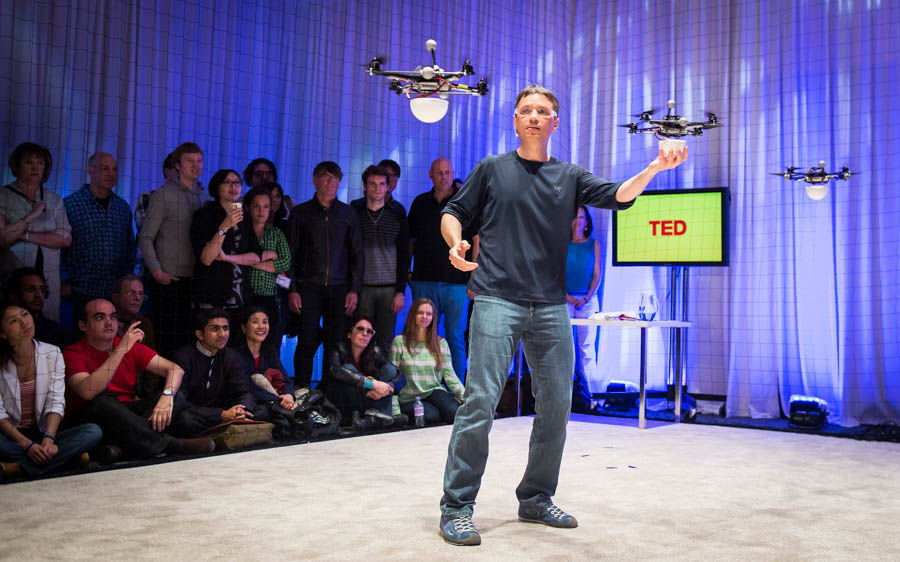
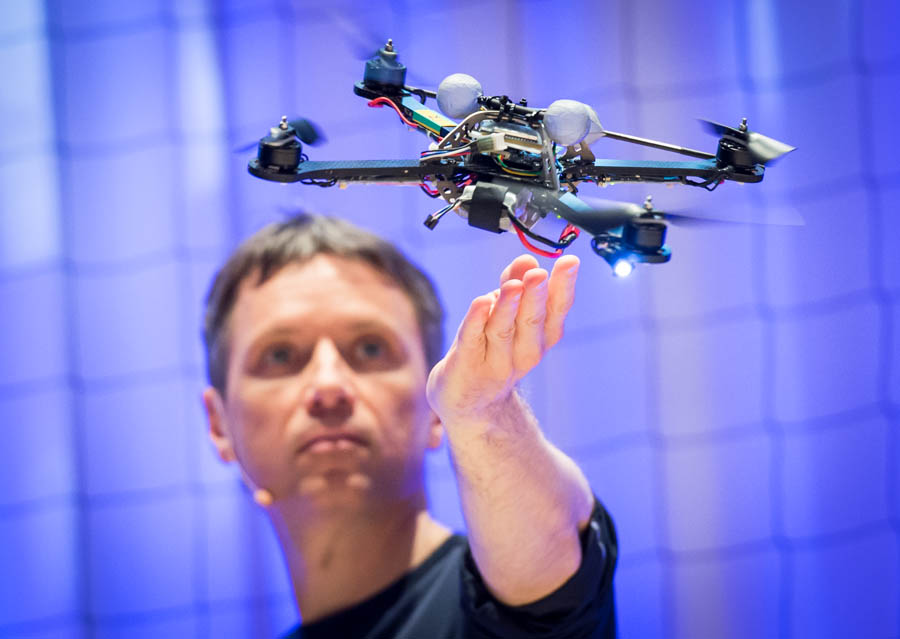
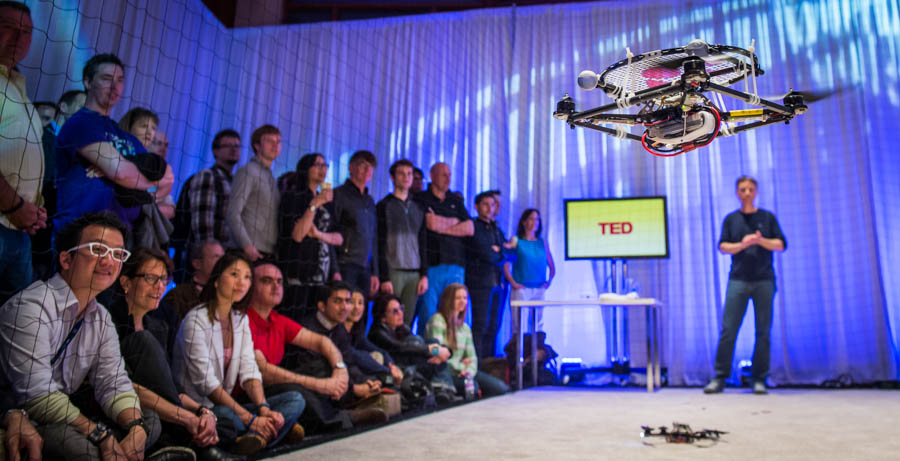
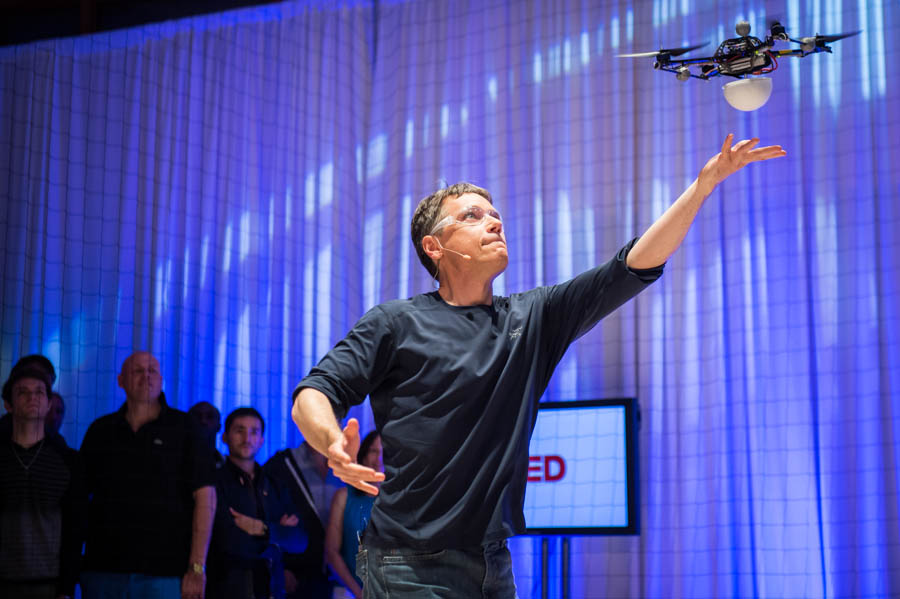
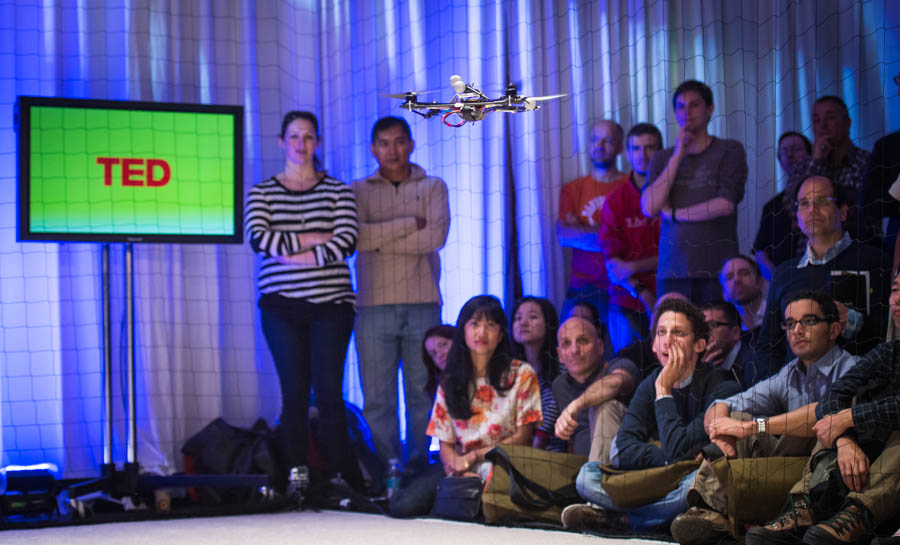
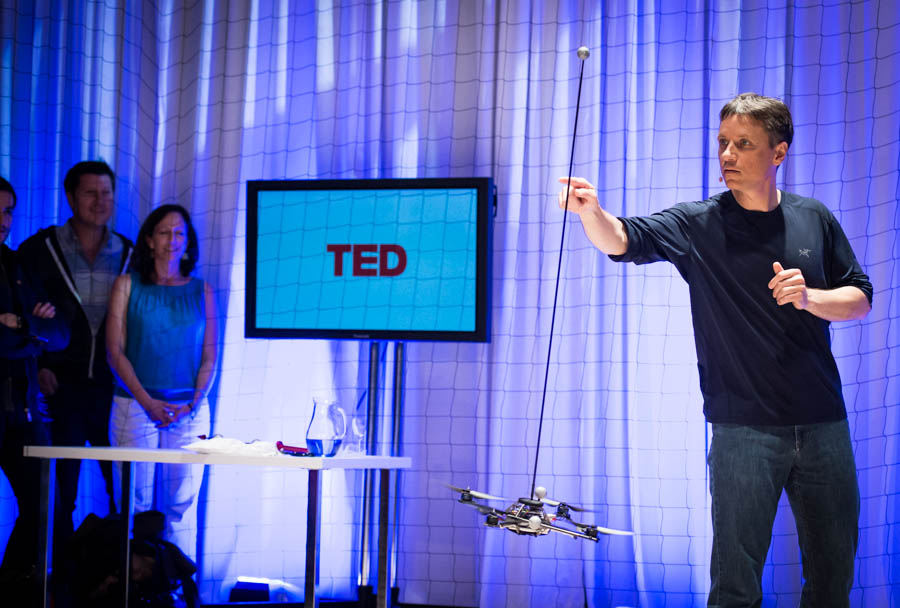
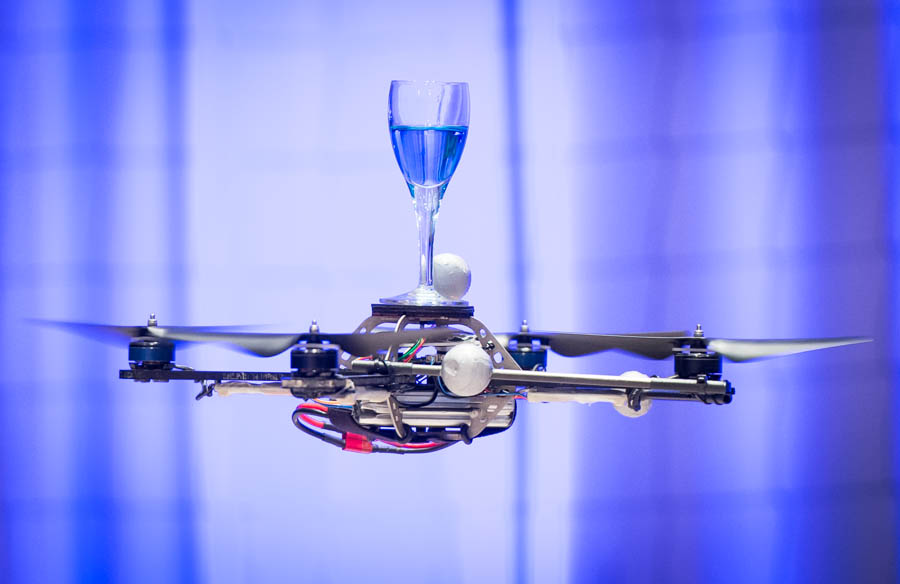
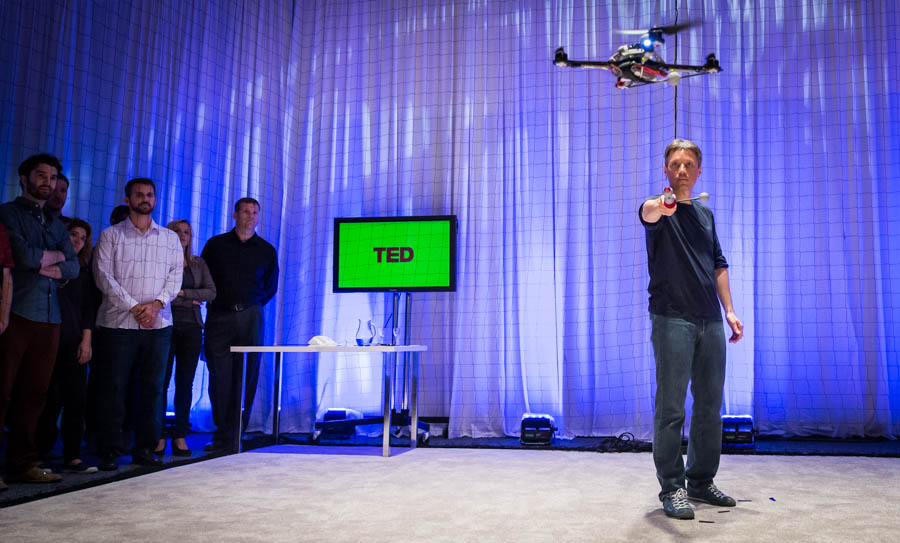
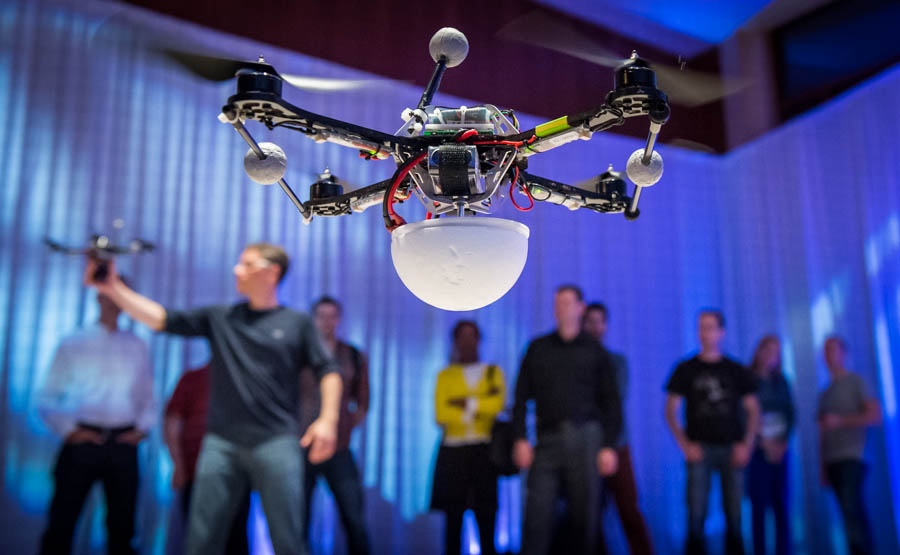
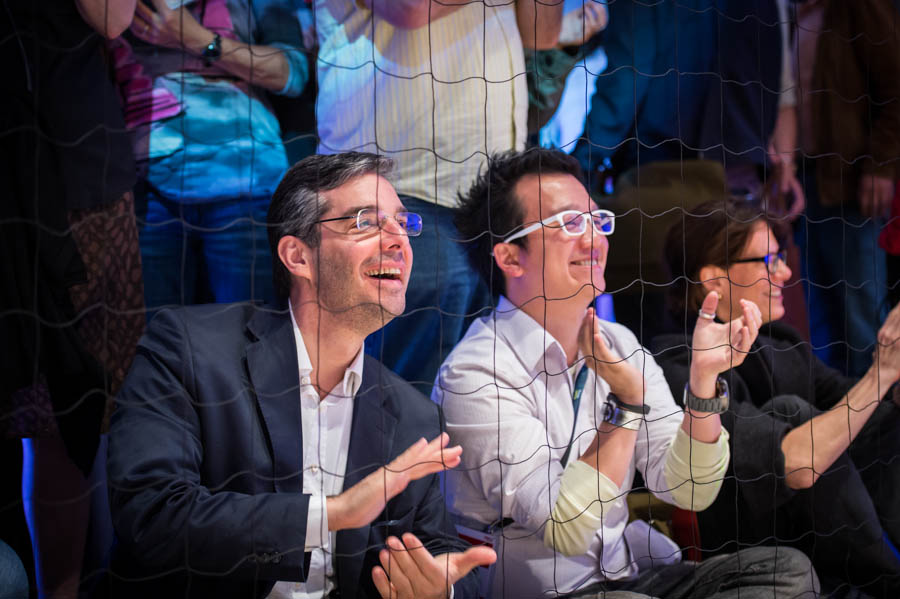
Comments (7)
Pingback: Abgefahrenes Video mit Quadrocoptern | fein und knusprig
Pingback: Athletic machines: Raffaello D’Andrea at TEDGlobal 2013 | sUAS News
Pingback: 10 Things I Loved About @TEDGlobal Day 1 via TED Live | Life Out of a Box
Pingback: Athletic machines: Raffaello D’Andrea at TEDGlobal 2013 | Emily Baldwin Social Media Maven, Possibilites and Ideation